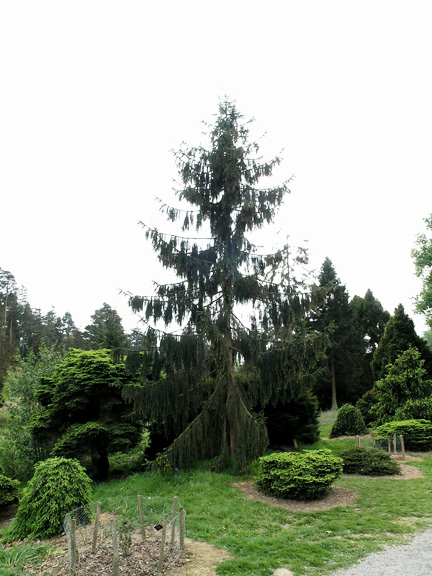| General Description | Picea abies ‘Pendula Major’ has beautiful dark green foliage; long branches which take a weeping form; it does not need to be staked to grow upright unlike it’s relative P. abie ‘Pendula’. This tree is tall and narrow, with loosely spread branches. |
| ID Characteristic | An upright, weeping tree that almost forms a curtain effect as it matures. Needles are 4 sided and attached to branches directly. Awkward looking when young but matures gracefully. |
| Shape | Weeping, pyramidal form. |
| Landscape | Good tree for windbreaks or focal point in a garden, and makes a great dark backdrop for colourful plants. |
| Propagation | This tree is typically propagated by grafts; it can be propagated onto the understock of Picea abies. |
| Cultivation | Full sun is best, and does well in slightly moist, well drained soils; is tolerant of most average soils as well. This tree prefers a colder climate. |
| Pests | Relatively pest and disease free. |
| Habitat | Horticultural origin. |
| Bark/Stem Description | Bark is a grey-brown colour, and thick in texture with some flaking. |
| Flower/Leaf Bud Description | Small, about 2 cm in length, they are an orange-brown colour and scaled tightly. |
| Leaf Description | Leaves are needle like and 4 sided; about 12–24 mm in length. They are not bundled, but are crowded densely on the twig and wrap around the twig in all directions. |
| Flower Description | Monoecious, it has seperate male and female reproductive units. |
| Fruit Description | Does not often bear cones as it is a cultivar, but when it does they are quite similar to that of the p. abies straight species. They are 6–10 cm in length, pendulous and cylindrical. |
| Colour Description | Foliage is a dark green colour, while bark becomes a paler grey as it matures. Buds are brownish orange and cones are a light brown. |
| Texture Description | Needles are quite sharp. The bark is a bit rough and flaky as it ages. |
